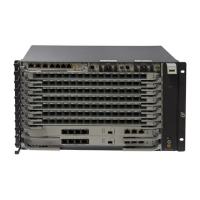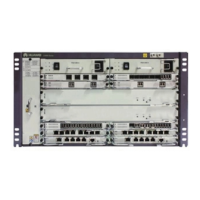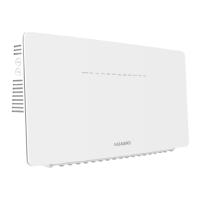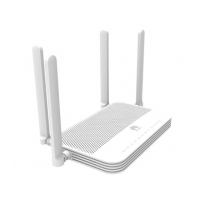Do you have a question about the Huawei MTS9300A and is the answer not in the manual?
Defines symbols used to indicate hazards and precautions.
Essential guidelines for safe installation, operation, and maintenance.
Measures to protect personnel from electrical shock and other hazards.
Specifies qualifications and training for personnel handling the equipment.
Details safety procedures related to electrical hazards and grounding.
Outlines environmental conditions required for safe and proper equipment operation.
Safety guidelines for performing work at elevated positions.
Covers safety measures for mechanical operations, including hoisting.
Safety precautions to take when drilling holes near equipment.
Safety guidelines for handling and moving heavy equipment components.
Crucial safety precautions for handling and maintaining batteries.
Introduces the Multiple Telecommunication System (MTS) and its purpose.
Details the physical appearance and specifications of the equipment cabinet.
Describes the AC and DC power distribution components.
Details the DCDB48-200-16B and power subrack components.
Describes the DMU02C1 module, its indicators, and communication ports.
Details the AC and battery power distribution boxes and their specifications.
Explains the SMU02C monitoring module, its indicators, and buttons.
Describes the UIM05B1 module and its dry contacts.
Explains the function of the rectifier and its indicator status.
Details the specifications of the HXC300S heat exchanger.
Introduces the various sensors used in the system.
Describes the door status sensor.
Details the digital temperature and humidity sensor.
Describes the temperature sensor.
Information about the light component.
Details the Lithium Battery ESM-48100B1, its appearance, and LED indicators.
Outlines the process and schedule for regular maintenance of the equipment.
Details routine maintenance checks for the equipment cabinet.
Covers maintenance procedures for AC and DC power distribution systems.
Describes maintenance procedures and fault identification for rectifiers.
Details maintenance and troubleshooting for the SMU monitoring unit.
Explains how to maintain and check SMU parameters.
Provides guidance on maintaining and checking various cables.
Covers routine maintenance and installation guidelines for ESMs.
Guides on diagnosing faults in various system components.
Lists common faults specific to rectifiers.
Explains how to identify faulty circuit breakers.
Lists common faults associated with the SMU.
Provides step-by-step instructions for replacing key system components.
Detailed procedure for replacing the SMU02C module.
Step-by-step guide for replacing the UIM05B1 module.
Instructions for safely replacing a rectifier unit.
Procedure for replacing a circuit breaker.
Steps for replacing the heat exchanger fans.
Procedure for replacing the door status sensor.
Steps for replacing the ambient temperature and humidity sensor.
Procedure for replacing the battery temperature sensor.
Instructions for replacing a light component.
Detailed steps for replacing an ESM module.
Lists the environmental operating and storage conditions for the equipment.
Details the electrical input, output, and protection specifications.
Specifies the electromagnetic compatibility standards and requirements.
Defines symbols used to indicate hazards and precautions.
Essential guidelines for safe installation, operation, and maintenance.
Measures to protect personnel from electrical shock and other hazards.
Specifies qualifications and training for personnel handling the equipment.
Details safety procedures related to electrical hazards and grounding.
Outlines environmental conditions required for safe and proper equipment operation.
Safety guidelines for performing work at elevated positions.
Covers safety measures for mechanical operations, including hoisting.
Safety precautions to take when drilling holes near equipment.
Safety guidelines for handling and moving heavy equipment components.
Crucial safety precautions for handling and maintaining batteries.
Introduces the Multiple Telecommunication System (MTS) and its purpose.
Details the physical appearance and specifications of the equipment cabinet.
Describes the AC and DC power distribution components.
Details the DCDB48-200-16B and power subrack components.
Describes the DMU02C1 module, its indicators, and communication ports.
Details the AC and battery power distribution boxes and their specifications.
Explains the SMU02C monitoring module, its indicators, and buttons.
Describes the UIM05B1 module and its dry contacts.
Explains the function of the rectifier and its indicator status.
Details the specifications of the HXC300S heat exchanger.
Introduces the various sensors used in the system.
Describes the door status sensor.
Details the digital temperature and humidity sensor.
Describes the temperature sensor.
Information about the light component.
Details the Lithium Battery ESM-48100B1, its appearance, and LED indicators.
Outlines the process and schedule for regular maintenance of the equipment.
Details routine maintenance checks for the equipment cabinet.
Covers maintenance procedures for AC and DC power distribution systems.
Describes maintenance procedures and fault identification for rectifiers.
Details maintenance and troubleshooting for the SMU monitoring unit.
Explains how to maintain and check SMU parameters.
Provides guidance on maintaining and checking various cables.
Covers routine maintenance and installation guidelines for ESMs.
Guides on diagnosing faults in various system components.
Lists common faults specific to rectifiers.
Explains how to identify faulty circuit breakers.
Lists common faults associated with the SMU.
Provides step-by-step instructions for replacing key system components.
Detailed procedure for replacing the SMU02C module.
Step-by-step guide for replacing the UIM05B1 module.
Instructions for safely replacing a rectifier unit.
Procedure for replacing a circuit breaker.
Steps for replacing the heat exchanger fans.
Procedure for replacing the door status sensor.
Steps for replacing the ambient temperature and humidity sensor.
Procedure for replacing the battery temperature sensor.
Instructions for replacing a light component.
Detailed steps for replacing an ESM module.
Lists the environmental operating and storage conditions for the equipment.
Details the electrical input, output, and protection specifications.
Specifies the electromagnetic compatibility standards and requirements.
| Brand | Huawei |
|---|---|
| Model | MTS9300A |
| Category | Network Hardware |
| Language | English |











